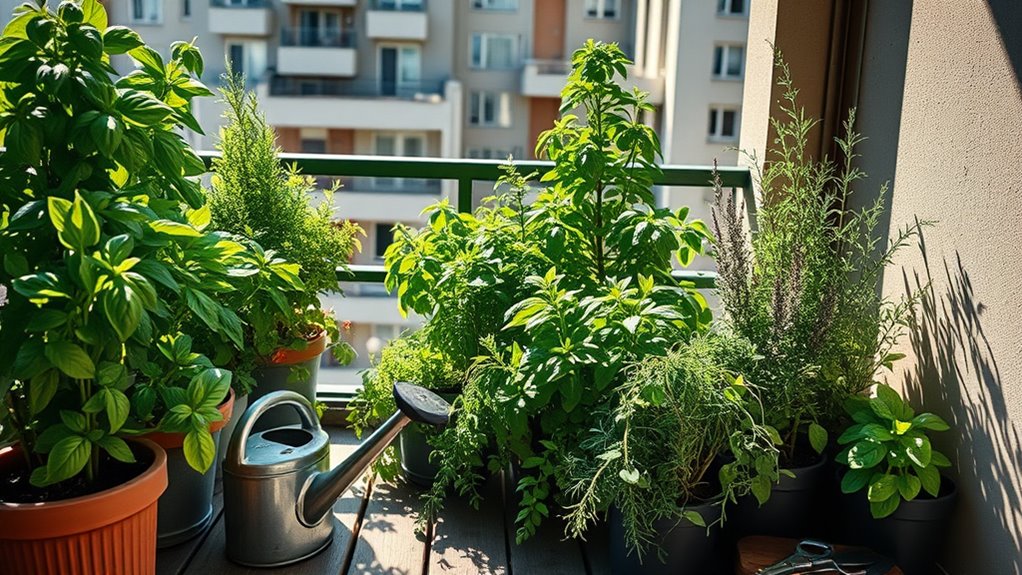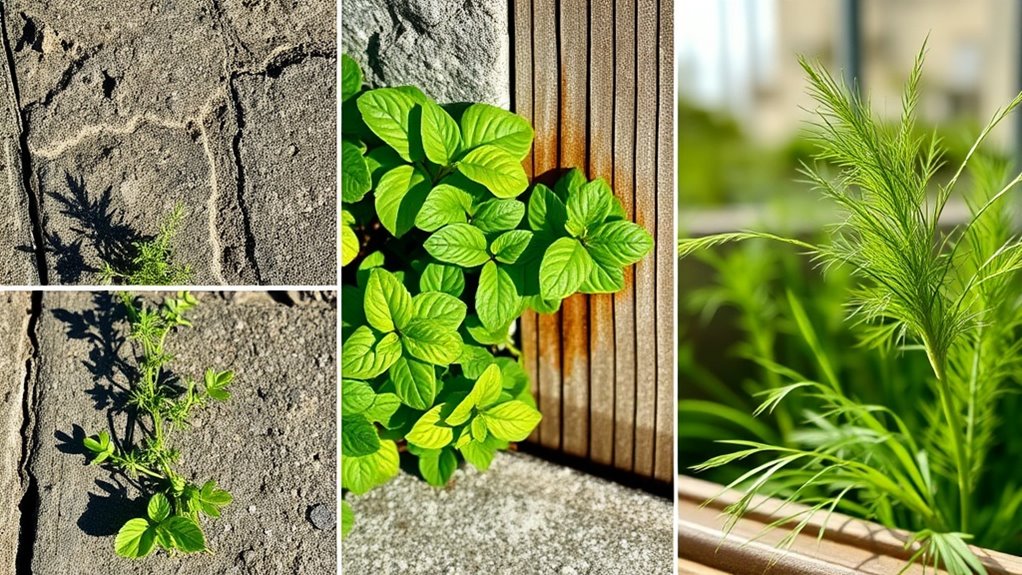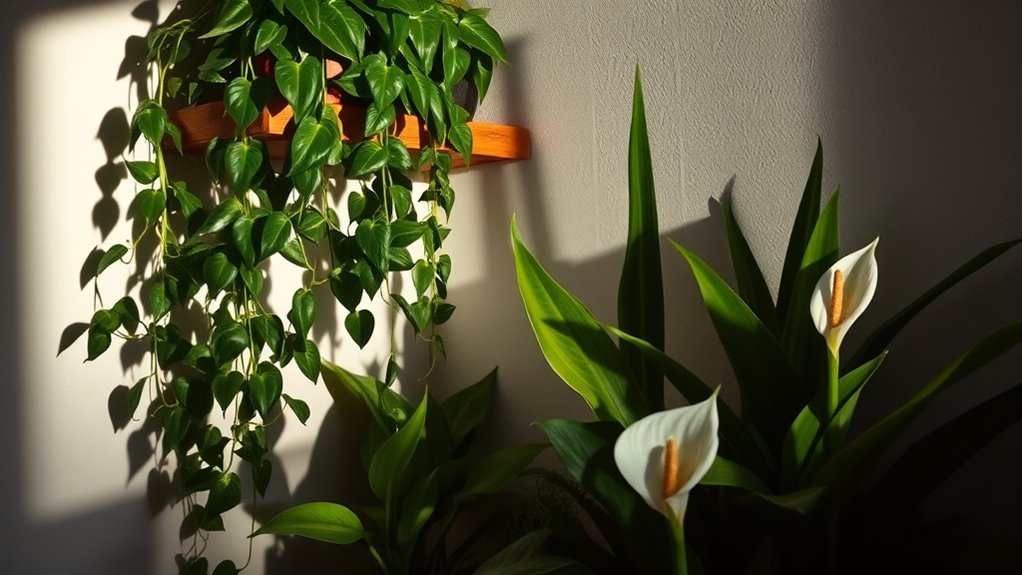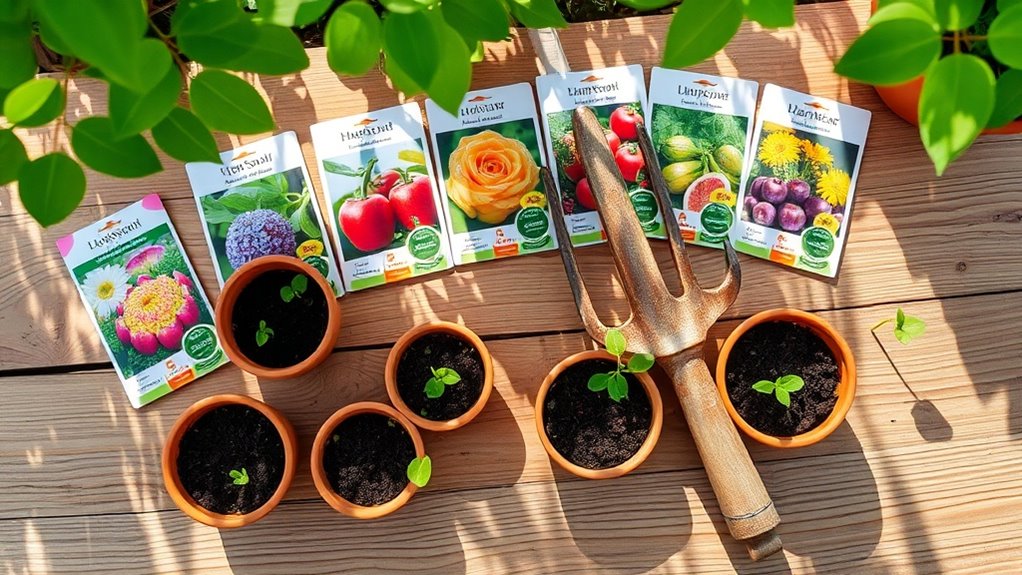How to Keep Herbs Thriving on Your Apartment Balcony
Many people underestimate the potential of a small apartment balcony to support a thriving herb garden. With the right selection of herbs and a few simple techniques, you can transform your outdoor space into a lush oasis. From choosing sun-loving varieties to mastering watering habits, there’s a lot to consider. Let’s explore how you can create the perfect environment for your herbs to flourish and elevate your culinary adventures.
Key Takeaways
- Choose herbs based on your balcony’s climate and sunlight, selecting sun-loving or shade-tolerant varieties as needed.
- Ensure herbs receive 6 to 8 hours of direct sunlight daily, and use reflective surfaces to enhance light exposure.
- Utilize breathable containers like terra cotta or lightweight options like plastic, and prepare soil with a mix of potting soil and compost.
- Water deeply and infrequently, checking soil moisture regularly, and water in the morning to prevent evaporation.
- Apply liquid fertilizers every four to six weeks and inspect for pests, using natural deterrents when necessary.
Choosing the Right Herbs for Your Space
When it comes to keeping herbs thriving, the first step is choosing the right ones for your space.
For balcony herb gardening, consider your climate and the amount of sunlight your balcony receives.
If you’ve got plenty of sun, go for herbs like basil, rosemary, or thyme.
If your space is shadier, opt for mint or parsley.
Think about your cooking habits, too; growing herbs you frequently use will make your culinary adventures even more enjoyable.
Start small, experiment with a few varieties, and watch how they flourish in your unique little garden nook.
To ensure optimal growth, pay attention to soil quality, which is essential for healthy herbs.
Happy planting!
Optimal Lighting Conditions for Balcony Herbs
To keep your balcony herbs thriving, you’ll need to pay close attention to their sunlight needs. Position them where they’ll soak up the right amount of light, and don’t forget to adjust their placement as the seasons change. With a little planning, you can create the perfect environment for your herbs to flourish. Additionally, consider using low-light herbs that can thrive even in less optimal lighting conditions.
Sunlight Requirements for Herbs
How can you ensure your balcony herbs get the sunlight they crave?
Aim for at least 6 to 8 hours of direct sunlight daily.
Herbs like basil, rosemary, and thyme thrive in bright light, while others like parsley prefer partial shade.
Monitor your herbs regularly; if they start to stretch or lose color, they’re likely not getting enough light.
Consider using reflective surfaces, like white walls or mirrors, to maximize sunlight exposure.
If your balcony lacks natural light, think about using grow lights as a supplement.
Ideal Placement Strategies
Where’s the best spot for your herbs on the balcony?
Look for a location that gets at least six hours of sunlight daily.
Avoid spots that are shaded by walls or neighboring buildings.
If your balcony has a railing, consider hanging pots or vertical planters to maximize exposure.
Group your herbs together; this creates a microclimate that retains moisture and promotes growth.
Keep an eye on how the sunlight shifts throughout the day, and don’t hesitate to move pots around to capture the best light.
Seasonal Light Adjustments
As the seasons change, so does the light your herbs receive, making it essential to adapt your care routine.
In spring and summer, your herbs thrive with 6 to 8 hours of direct sunlight. Position them to catch that golden glow!
As autumn and winter roll in, the sun’s angle shifts. Move your pots closer to the balcony railing or consider using reflective surfaces to maximize light.
If natural light falls short, supplement with grow lights to keep your herbs vibrant.
Regularly check for signs of stress, and adjust their location as needed to ensure they get the light they crave!
Container Selection and Soil Preparation
Choosing the right container and preparing the soil are crucial steps for healthy herbs.
You’ll want materials that allow for good drainage while providing enough support for growth.
Additionally, a well-balanced soil mix ensures your herbs get the nutrients they need to thrive. Consider using a well-draining soil mix to prevent waterlogging and promote root health.
Ideal Container Materials
When it comes to keeping your herbs thriving, selecting the right container materials is crucial.
Each option offers unique benefits, so consider these materials:
- Terra cotta: Breathable, allowing roots to stay healthy and moisture levels consistent.
- Plastic: Lightweight and affordable, perfect for rearranging your balcony garden.
- Wood: Naturally insulating, providing a rustic charm along with good drainage.
- Metal: Stylish and durable, though be mindful of heat retention in direct sunlight.
Choosing the right container not only impacts your herbs’ growth but also enhances your balcony’s aesthetic.
Get creative and make it a space you love!
Soil Composition Essentials
The right soil composition is like a secret recipe for thriving herbs; it’s essential for their growth and vitality.
Start by selecting a well-draining potting mix, ideally one formulated for herbs or vegetables.
You can create your own by combining equal parts potting soil, compost, and perlite for aeration.
This mixture provides nutrients while ensuring excess water drains away, preventing root rot.
Don’t forget to fill your containers to about an inch below the rim to allow space for watering.
Regularly check the moisture level—herbs prefer slightly dry soil between waterings for optimal health.
Happy planting!
Watering Techniques for Healthy Growth
Watering your herbs correctly is crucial for their vibrant growth and flavor.
You don’t want to drown them or leave them parched.
Here are some techniques to keep them thriving:
- Water deeply and infrequently to encourage strong root systems.
- Check soil moisture by sticking your finger an inch deep; if it feels dry, it’s time to water.
- Water in the morning to reduce evaporation and fungal growth.
- Use a watering can with a spout for precise delivery, avoiding wet leaves.
Additionally, consider the overall watering schedule to ensure your herbs receive consistent moisture throughout their growth.
With these techniques, you’ll nourish your herbs and enjoy a lush, aromatic balcony garden!
Fertilizing and Nutrient Management
How can you ensure your herbs get the nutrients they need to flourish?
Start by choosing a high-quality potting mix designed for herbs, which often contains essential nutrients.
You can also supplement with liquid fertilizers every four to six weeks.
Look for organic options like fish emulsion or seaweed extract; they’re gentle yet effective.
Don’t forget to monitor your herbs’ growth—if they seem pale or stunted, they might need a nutrient boost.
Lastly, consider composting kitchen scraps to create nutrient-rich soil amendments. Homemade fertilizer from kitchen scraps can provide a rich source of nutrients for your herbs.
Your herbs will thrive with a little extra care and attention!
Pest Control and Maintenance Tips
Maintaining healthy herbs isn’t just about providing nutrients; keeping pests at bay is equally important.
You can protect your plants and ensure their vitality with a few simple strategies:
- Regularly inspect your herbs for signs of pests.
- Use neem oil or insecticidal soap for a natural deterrent.
- Introduce beneficial insects like ladybugs to your balcony.
- Keep your plants clean by gently wiping leaves with a damp cloth.
- Consider making a DIY bug spray with three natural ingredients to combat unwanted pests effectively.





